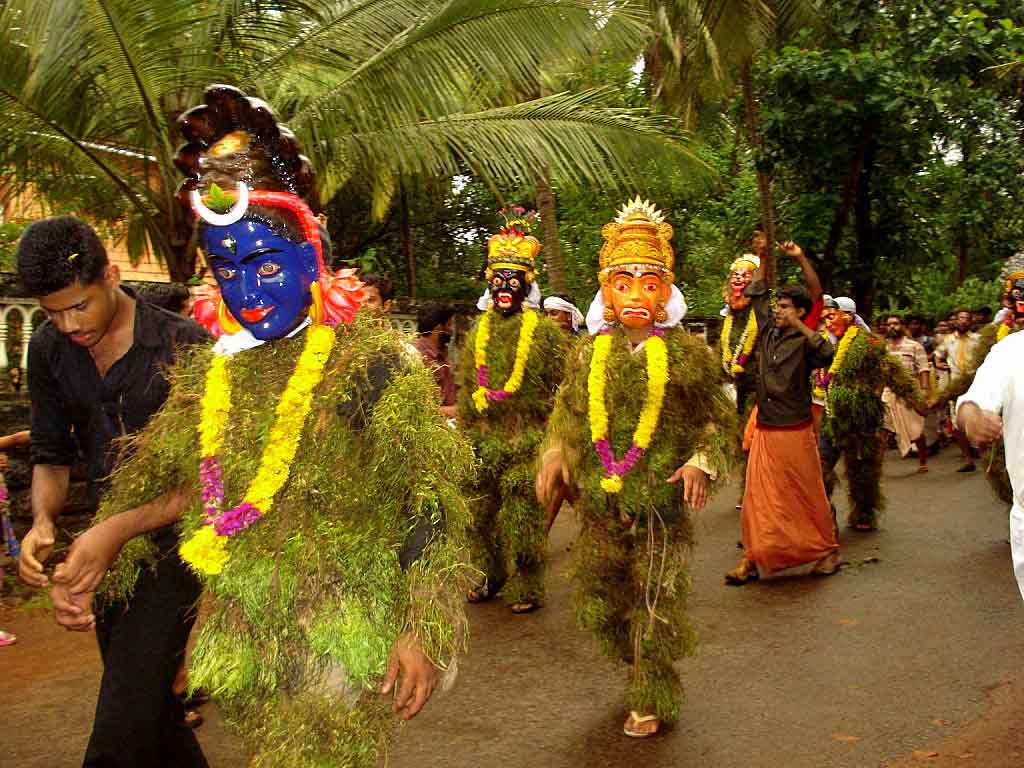OUR TOP TRENDING APPS
This classical dance form of Kerala was first performed by women in temples over a thousand years ago as an offering to God, their beloved. The movements may appear simple but effort is required to capture the grace suggestive of ocean waves, as seen in goddess Mohini, the Enchantress. This dance form exudes enchantment grace and passion. Mohiniyattam is a fusion of ' Bharathanatyam ' and ' Kathakali ', as it combines the graceful elegance of Bharatanatyam and dynamism and vigour of Kathakali. The performances are done only by women. In Mohiniyattam, the Lasya element of dancing is predominant, and the mood created is Sringaram (erotic) Mohiniyattam literally means the 'Dance of the Temptress'.

It is believed to be India’s oldest form of classical dance. This dance form which is called poetry in motion, has its hoary origins in the Natya Sastra written about 4000 B.C. by Sage Bharatha. This art form grossly disallows new fangled innovations or gimmicks except in repertoire and forms of presentation. It was originally known as ‘Dasi Attam,’ a temple art performed by young women called ‘devadasis'.

Kathakali originated from a precursor dance-drama form called Ramanattam and owes it share of techniques also to Krishnanattam.The word "attam" means enactment. In short, these two forerunning forms to Kathakali dealt with presentation of the stories of Hindu Gods Rama and Krishna. It was Kottarakara Thampuran (1555-1605) (ruler of the south Kerala province of Kottarakara) who composed several plays on the Ramayana ,which led to the evolution of Kathakali. Today, Ramanattam is extinct, but its storyplays continue to be a part of Kathakali.

Thiruvathirakali is a classical dance form, which is a pointer to the old customs followed in the Nair tharawads (joint families). In this dance form, the women of the house dance elegantly around the ceremonial lamp or floral decoration on festive occasions to the accompaniment of the Thiruvathira pattu (song).
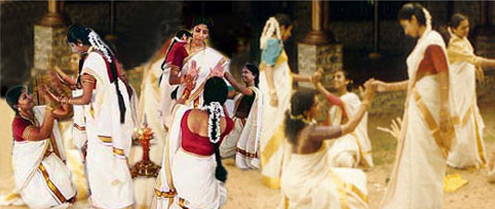
Kalarippayatt is the traditional martial art of Kerala. It is believed to be the forerunner of all eastern martial arts . It has played a significant role in the technical development of all other performing arts in Kerala. Its roots can be traced back to the 12th century when skirmishes among the many feudal principalities were very common.
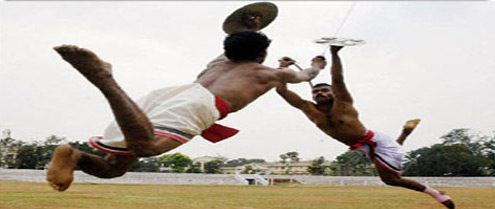
This dance form was originated by Kunjan Nambiar, one of the leading poets of Malayalam. The solo performance is marked by fast rhythmic movements. The dancer himself sings the lead to the accompaniment of the maddalam and elethalam. Thullal is classified into three - Ottanthullal, Seethankam thullal and Parayanthullal - based on the metre and rhythm of the songs and the distinctions in costume and dance. As most other art forms of Kerala, Thullal also has colourful costumes, with elaborate headgears and paintings of the face. And is usually presented during temple festivals.Thullal is a modification of the Koothu. It is characterised by simplicity of presentation, wit and humour. This dance form was originated by Kunjan Nambiar, one of the leading poets of Malayalam. The solo performance is marked by fast rhythmic movements. The dancer himself sings the lead to the accompaniment of the maddalam and elethalam. Thullal is classified into three - Ottanthullal, Seethankam thullal and Parayanthullal - based on the metre and rhythm of the songs and the distinctions in costume and dance. As most other art forms of Kerala, Thullal also has colourful costumes, with elaborate headgears and paintings of the face. And is usually presented during temple festivals.
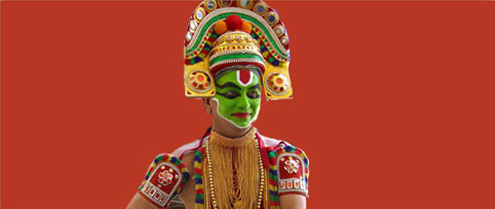
Theyyam is one of the most outstanding ancient dance form of Kerala. It has its origin in the northern parts of the state. It is a very fascinating ritual practised for centuries by the tribal people and the villagers of Northern Kerala. This folk art form is also called Thirayattam, because every thira or village performed this ritualistic art at the village temple. The Theyyam or Kolam (a form or shape), represents a mythological, divine or heroic character. There are over 350 Theyyams in northern Kerala.It is a dance form glorifying the Theyyam, the local deity, who is believed to bless and arbitrate between the farmers and their landlords. This primitive ritualistic art demands long hours of preparation before the performance. The bizarre head dresses, costumes and body painting and trance like performances are very extraordinary Each one has a distinguishing headgear and costume made out of natural materials like leaves and bark. Musical accompaniments are chenda and veekuchenda (drums), elathalam and kuzhal (horn). Theyyam is always performed by men. Female roles are also enacted by men wearing suitable makeup and colourful costumes.During the festival season between January and April, Theyyam performances can be seen in the villages in the erst-while Malabar region, especially in the Kannur District. There are regular Theyyam performances at Sri Muthappan Temple in Parassinikadavu, which is some 20 km north-east of Kannur town.

Koodiyattam is perhaps the oldest dance drama form still in existence in India.Koodiyattam literally means dancing together. Based on the Sanskrit text, a performance of this art form may last from a few days to a few weeks.The survival of this age-old Sanskrit theatre against all odds owes to the Chaliyar community. Deprived of the right for the Vedas, they are a caste intermediate between Brahmins and Nairs by status. Their principal vocation has been natya(the theatrical art). Koodiyattam can claim an antiquity of 2000 years. Some references to this art form can be seen in the treatises of the second century Chilapathikaram the various classical theatre forms, Koodiyattam is the only one staged strictly in accordance with the tenets of ‘Natyasastra’It is Kathakali's 2000 years old predecessor. Makeup patterns and costumes of Koodiyattam are believed to be the forerunners of the Kathakali costume. It is traditionally enacted in the temples as a votive offering to the deity. Usually excerpts of plays like Subhadra Dhananjayam, Abhishekanatakam, Balacharitam, Ascharya Choodamani etc are staged nowadays. Enacting each of the fourteen verses of Subhadra Dhananjayam itself lasts for three to four hours. The play is presented in Koothambalams (temple theatre.The koothambalam is elaborately decorated with plantain trees, bunches of tender coconut and fronds of coconut leaves; the stage, however, is simple.The construction of a Koothambalam is based on natyasastra, known as the fifth Veda. These theatre halls surpass their modern counterparts in architectural excellence in respect of illumination and accoustics. There are at present fourteen such theatre halls in Kerala. The traditional rhythm accompaniment is on mizhavu. The ecstatic drumming on this primordial percussion instrument helps the Chakkyar to delineate the myriad moods as demanded by the play. The Chakkyar performs the role of the male characters. Female characters are portrayed by Nangiars, the women folk of the Nambiar community. They also assist the Chakyars in background singing and in keeping the rhythm with kuzhithalam (small cymbals). The costumes in Koodiyattom vary according to the characters. Today, performing artistes among the Chakyars have been reduced to an endangered species. Ammaur Chachu Chakyar, Paimkulam Rama Chakyar, Padmasree Mani Madhava Chakyar are great exponents of this ancient theatrical art form. Chachu Chakyar Smaraka Gurukulam at Irinjalakuda is imparting training on this ancient art form. Koodiyattom is performed only at a few temples of Kerala such as at Irinjalakuda, Kottiyur etc.
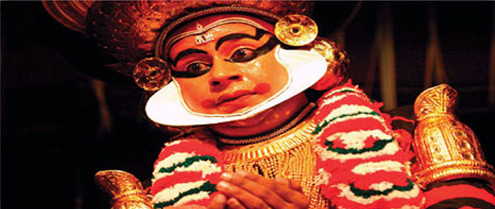
Krishnanattam, as the name suggests, originated as a votive offering to Sree Krishna. It is performed in group and is presented across eight nights. The story is based on the Sanskrit text, Krishna Geetha. The charm of this classical art form is in the synchronised grace of movement of the entire group. The costume and makeup of Krishnanattam bear traces of resemblance to Kathakali and folk arts like Thiyattam, Mudiyettu and Theyyam. Musical instruments used are maddalam, elathalam and chengila. Krishnanattam is most commonly performed in the Guruvayoor temple.
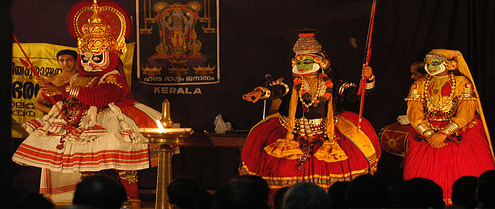
A dance form essential to the wedding entertainment and festivities of the Malabar Muslims.Maidens and young female relatives sing and dance around the bride, clapping their hands.The songs of Mappilappattu, are first sung by the leader and are repeated by the chorus.The themes are often teasing comments and innuendoes about the bride's anticipated nptial bliss. Oppana is often presented as a stage item today.
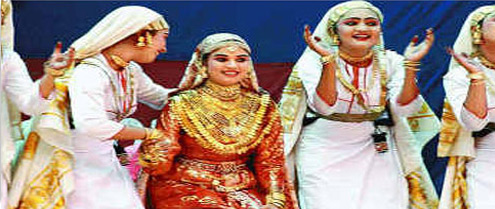
Kakkarissi natakom is a satirical dance-drama based on the puranic legends of Lord Siva and his consort Parvati when they assumed human forms as Kakkalan and Kakkathi - the male and female members of a nomadic tribe of fortunetellers.
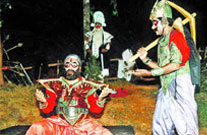
A folk art mainly of the agrarian classes,Kolkkali is a highly rhythmic and the perfomers never miss a beat.In Malabar,is more popular among Muslim men.

Duffmuttu is also known as Aravanamuttu.It is a group performance popular among the Musilms of Malabar.Duffmuttu is staged as a social event during festivals and nuptial ceremonies.

Patayani is a week - long ritual dance held in Kaali temples an the bank of the Pamba River during the Malayalam months of Meenam and Medam(March-April).
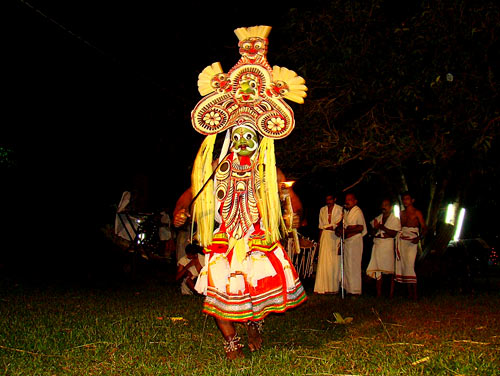
Koothu is a socio-religious art performed in the Koothambalam or the Koothuthara of temples,either independently or as part of Koodiyattom.It is a solo narrative performance interspersed with mime and comic interludes.The Chakkiardons the role of Vidushaka of the wise jester.Through his inimitable narration of stories from the epics(the Ramayana and the Mahabharatha),the Chakkiar stiries the manners and customs of the time.No one is above the butt of his ridicules.His wit ranges from innocent mockery to veiled innuendoes,barbed pun nad pungent invectives..
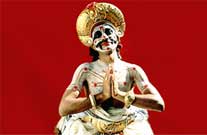
Mudiyettu is a ritual dance performed in some Kaali temples of Ernakulam nad Kottayam districts (Central Kerala).The dance celebrates the goddesss triumph over the demon Daarikan
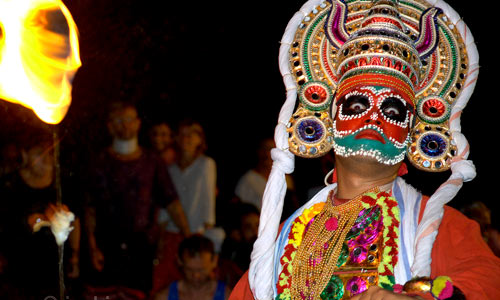
Kannyakali,also known as Desathukali,is a folk art exclusively practiced by the Nair community of the Palakkad area.It owes its orgin to the pursuit of martial arts in this region,which was under constant threat of attack from neighbouring Konganadu.
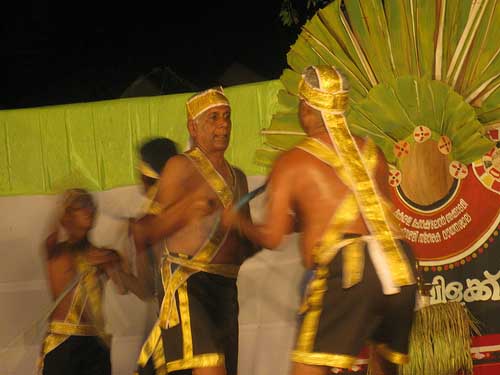
Thoppavakkoothu, literally meaning leater puppet play,is a ritual art performed during the annual feativals in the Kaali temples of Palakkad district. The theme of the play is based on the Kambha Ramayana,narrated in a diction that is a mixture of Malayalam and Tamil dialectical variations.The shadows play is presented in the Koothumadam,a specially constructed oblong playhouse on the temples premises.The puppets are fashioned out of the hide of baffalo and deer, the former for evil characters and latter for noble ones.
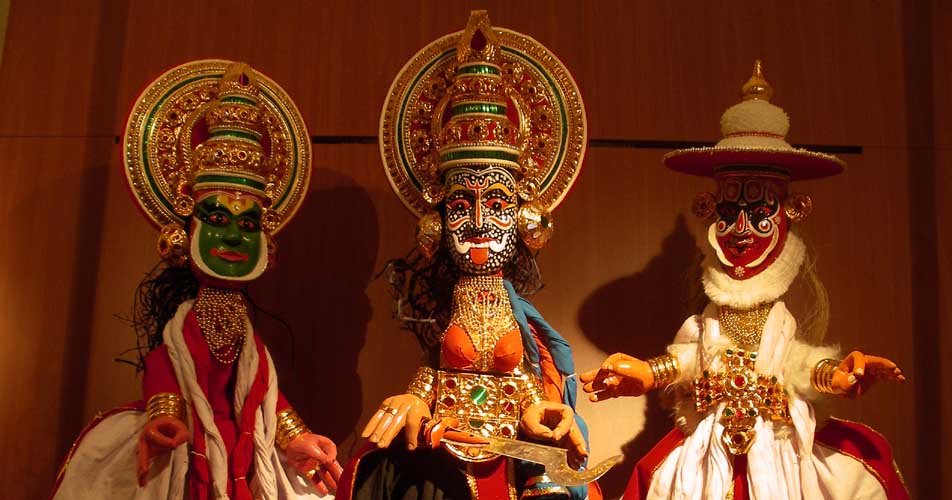
Arjuna nirtham (the dance of Arjuna) is a ritual art performed by men and is prevalent in the Bhagavathy temples of Kerala

This specacular martial dance is performed by men in some of the southern Kerala.The dancers,clad in the traditional clothes and colourful headgear of the medieval Nair soldiers,engage in vigorous movements and dexterous sword play, to the accompainment of an orchestra comprising the maddalam,ilathalam,kombu and kuzhal.Velakkali orginated in Ambalapuzha where Mathoor Panicker,chief of the Chempakasseri army,promoted it to boost the martial spirit of the people.The dance form is a regular featureof the annual festivities at the Ambalappuzha Sree Krishna temple in Alappuzha district.

The kalam is a unique drawing also called dhulee chithram or powder drawing.The artist uses the floor as his canvas.Kalamezhuthu pattu is performed as part of the rituals to worship and propitiate gods like Kaali,Ayappan or Vettakkoru makan.This ritualistic art is a common feature of temples as well as noble households..
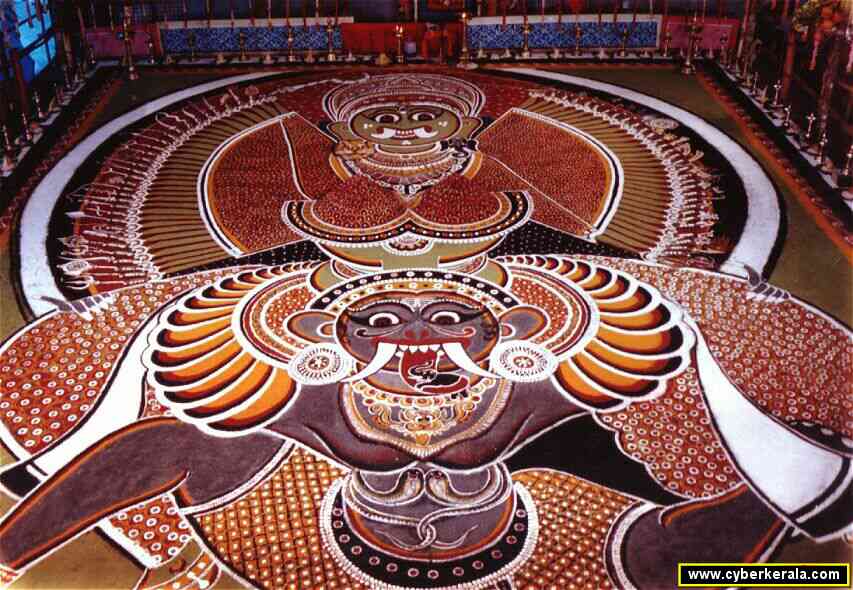
Margomkali is a ritual folk art of the Syrian Christains of Kottayam and Thrissur districts .A dozen dancers sing and dance around a lighted wick lamp (Nilakivakku),clad in the simple traditional white dhotiand sporting a peacock feathr on the turban to add a touch of colour.
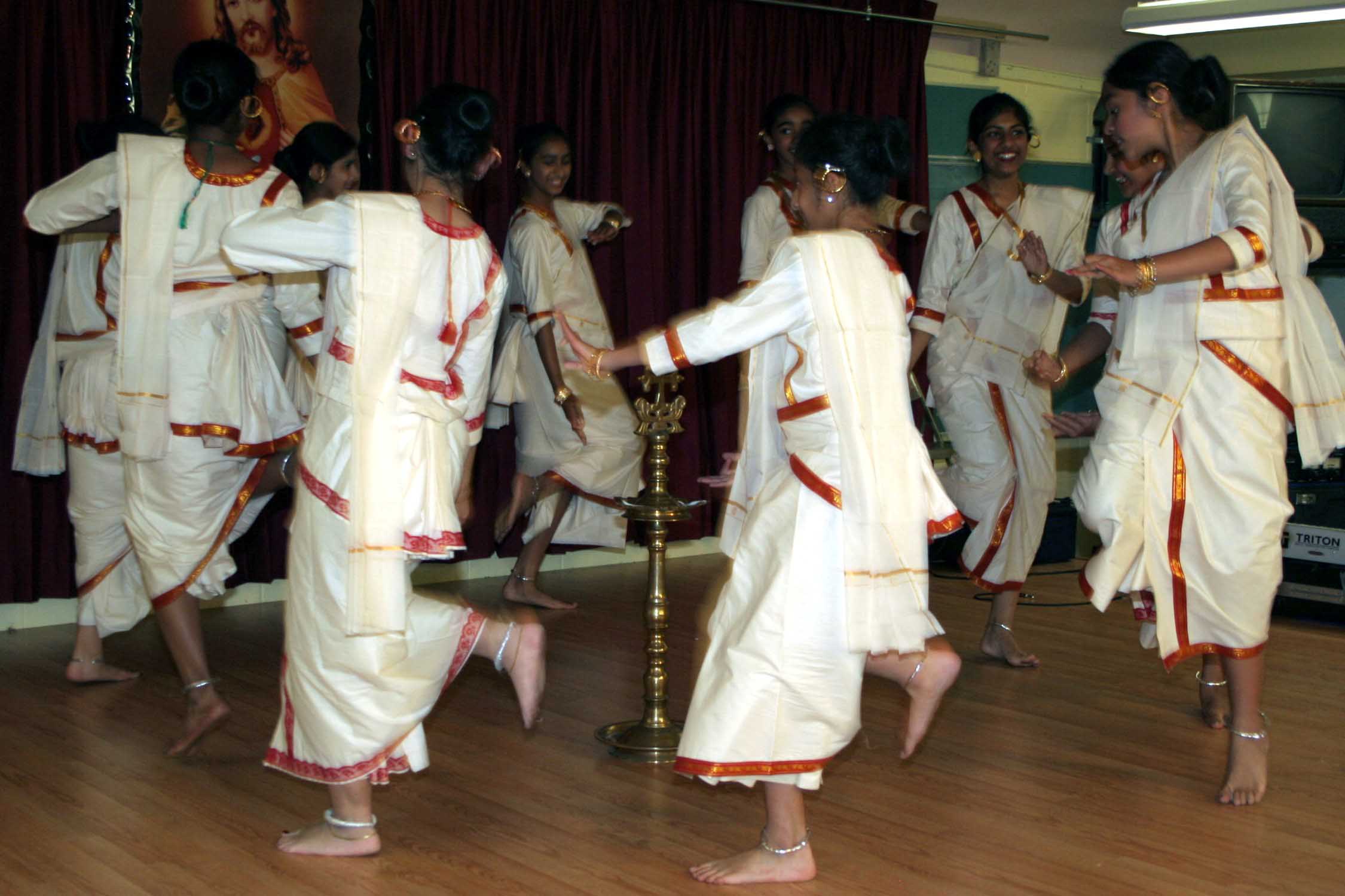
Kavadiyattom,a colourful ritual art,is avotive offering to Sree Subramanya.Basically of the Tamil origin, Kavdiyattom is widely prevalent in the Subramanya temples all over Keral during the feastival seasons..
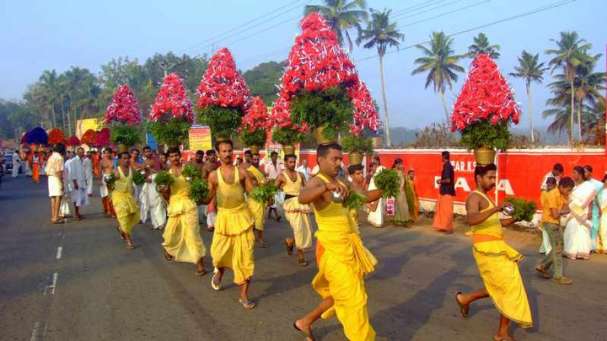
Theeyattu ia a solo dance-drama performed in front of the Kalam or Dholi Chitram (ritual drawing with coloured powders).It is enacted in some Bhagavathy temples of Thiruvalla,Kottayam,Thripunithura.
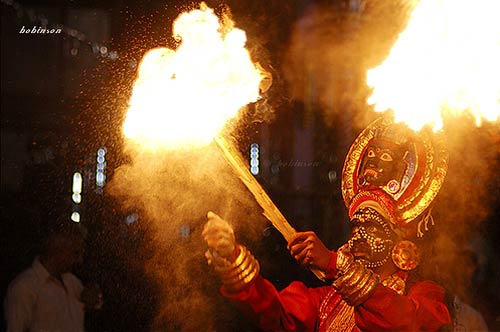
Kummatikali is a mask dance popular in Thrissur districtof Kerala.The dancers,wearing painted woden masks and sporting sprigs of leaves and grass,go dancing from house to house.A popular Kummatti character in Thalla or the witch; the others represent various Hindu gods and godesses.The songs deal with the devotional themes and are accompanied by a bow-like instrument called Onavillu.No formal training is required to perform the Kummattikkali, and often the spectators join in the performance.
.
